Contents
- Traditional and Modern Eating Practices
- Meals of the Day
- How Spicy is the Food?
- Usha Vahini Masale
- Deulkar Masale
- Local Produce
- Pickles
- Baby Food and Tiffin Boxes
- Festival and Seasonal Delicacies
- Prasad and Bhandara
- Smoking, Drinking and Substance Use
- Local Culinary Traditions
- Vada Kombda
- Nevarya
- Amboli
- Shirwale ani Naralacha Ras
- Eating Out
- Local Worker Cooperatives / Self-Help Groups
SINDHUDURG
Food
Last updated on 22 July 2025. Help us improve the information on this page by clicking on suggest edits or writing to us.
Sindhudurg district was carved out of Ratnagiri district around 1981. One might think that the food cultures of Sindhudurg and Ratnagiri are similar, but that is not the case. Sindhudurg shares a border with the state of Goa and consists of three talukas: Vengurla, Sawantwadi, and Dodamarg. Additionally, it has three talukas with beaches: Vengurla, Malvan, and Devgad. Consequently, seafood is the predominant cuisine in most of the region, featuring various types of fish, crabs, and more.
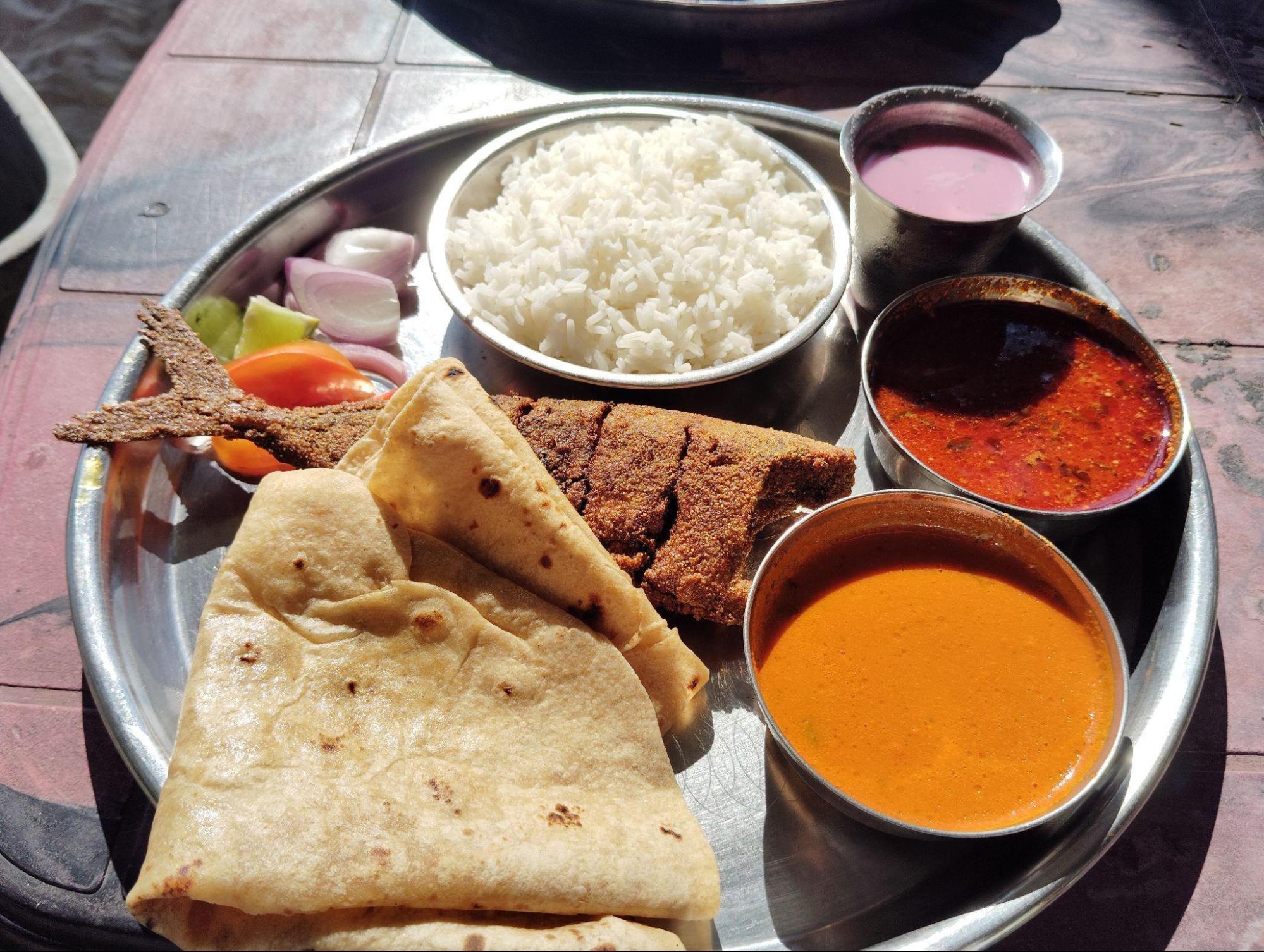
In contrast, the areas closer to the Kolhapur district tend to incorporate chicken more frequently into their daily meals. A notable dish from this region is Vada Kombda, which consists of Gavran chicken served with thick puris made from rice and other flours. For vegetarian options, there is a dish called Ghavan, made from rice flour. Thus, Sindhudurg's food culture exhibits diversity based on its geographical location.
Traditional and Modern Eating Practices
In the past, people were solely dependent on the food grown in their surroundings. Nowadays, while there is a variety of food items in meals, many still prefer to incorporate local ingredients whenever possible. Sindhudurg district has very few cattle due to its climate, which affects the local lifestyle and makes it difficult for cattle to sustain. Consequently, there are no gaushalas (cow shelters) in the area, resulting in a persistent shortage of milk and dairy products. A few families own cows and buffaloes, but they produce very little milk. To address this gap, milk and dairy products are imported from other districts, primarily Kolhapur. However, availability can be inconsistent; when fresh milk is not available, people often resort to using milk powder instead. The milk that is accessible is typically packaged, and due to the limited options, residents are compelled to use whatever milk is available.
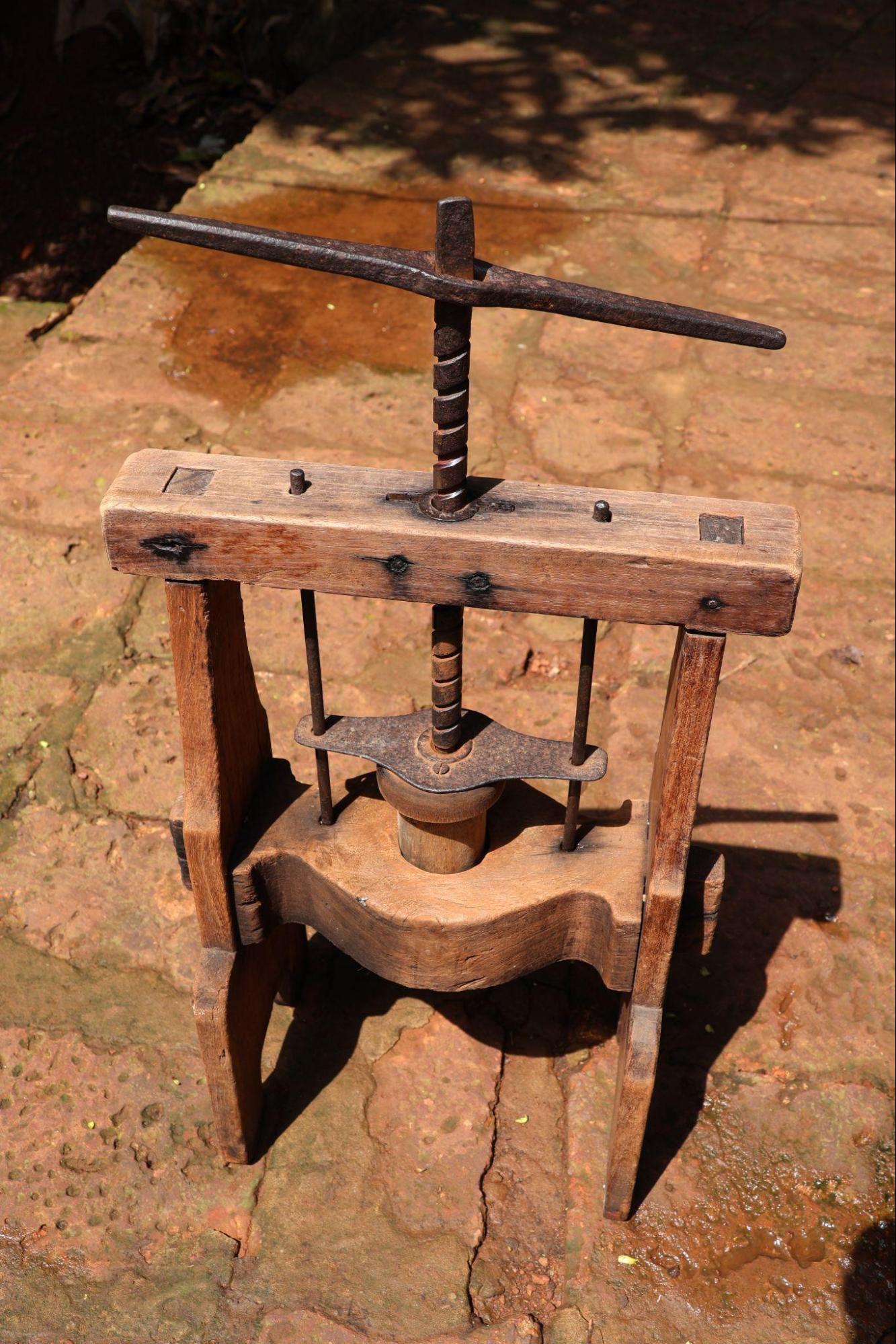
Here, people typically prepare their daily meals from scratch, using traditional tools. One such tool is a wooden device used for making Shirwale, a traditional dish typically consumed in the Konkan region. This particular tool is years old, which is why it is made of wood; today, similar tools are primarily available in metal.
Meals of the Day
Generally, most people in the region are farmers or engaged in primary goods production. In the morning, they enjoy a hot drink called Kora Chai, which is similar to black tea. After that, during the late morning hours, people have a morning snack known as Nyahari, which includes Bhaji-Bhakari, before settling down to work. Walichi Bhaji, also known as Chavali Shenga, is a long, soft legume commonly found in the Konkan region of Maharashtra. It is typically prepared by cutting the beans into small pieces and sautéing them with chopped onions, tomatoes, and freshly grated coconut, a process known as fodni. This dish is served as part of daily meals and is appreciated for its flavor and nutritional value.
Around mid-afternoon, people have their lunch, which typically consists of Bhaji-Bhakri-Bhat-Dal. In the evening, there is a tradition of snacking together. Finally, during the late evening hours, people eat the last meal of the day.

How Spicy is the Food?
Sindhudurg district is renowned for its Malvani masala, which is famous worldwide for its unique taste, distinctive spices, and overall flavor. Here are a few of the most popular masala brands from the region:
Usha Vahini Masale
Named after the lady who invented the secret masala, Usha Vahini Masale is now run with the help of her sons. The brand offers over 30 types of masalas and is located in the Kankavli taluka of Sindhudurg district.

Deulkar Masale
Established around 1965, Deulkar Masale is one of the first brands in Malvan. It has grown to operate internationally and offers a wide range of masalas, from those used for everyday vegetables to restaurant-style non-vegetarian options. This brand remains a family business.

Additionally, brands like Pravin Lonache and Suhana Masala are also notable for their authenticity and quality.
Local Produce
Fruits like kiwi and dragon fruit are being introduced into the market, but people in the Sindhudurg district mostly stick to their locally grown fruits. When it comes to vegetables, there are more than 60 varieties cultivated naturally without special care or fertilizers. These vegetables, known as Ranbhaja, meaning wild vegetables, include Takla, Alu, Firangi, Lajalu, and others. While there is some influence from new varieties of fruits and vegetables, the preference for traditional local produce remains strong among the community. The consistency of this preference varies, but the cultural attachment to locally sourced foods continues to dominate their diets.
Pickles
Mango pickle from Sindhudurg district is renowned for its exceptional taste and traditional preparation methods, passed down through generations. The region is known for producing high-quality mangoes, particularly the unripe varieties selected for pickling, which contribute to what many consider the world's best mango pickle.
Devgad taluka is especially noted for its superior mango pickles. In addition to mango pickles, some households near Vaibhavwadi, Kankavali, and Sawantwadi also produce Karwandache Lonache, a unique and flavorful pickle that stands out among the rest. The traditional methods of making these pickles not only preserve the rich flavors but also maintain the cultural heritage of the area, making Sindhudurg's mango pickles a beloved staple in many households.
Baby Food and Tiffin Boxes
There is a common answer to this question throughout the district, although some ingredients may vary. According to the Asha Sevika, the first food given to babies is Ghutti, which is provided through the Pradhan Mantri Scheme to all toddlers by Anganwadi centers. As shared by Mrs. Satyavati Desai, an 85-year-old resident, Ghutti is made at home and then mixed with water or cow's milk before being fed to the baby.
In the past, people in Sindhudurg district commonly enjoyed dishes like Besan Vadi, green vegetable bhaaji, and pulses bhaaji alongside bhakri made from rice or ragi flour in their tiffins. This simple, wholesome fare was deeply connected to nature and local agricultural practices. However, nowadays, this simplicity and connection to nature seem to be fading from the lives of the district's residents. Many people have shifted to eating chapatis more frequently than bhakri, often accompanied by dishes like paneer or soya chunks. Additionally, fast food options such as Maggi noodles, rolls, and sandwiches are sometimes provided to children for their lunch.
Festival and Seasonal Delicacies
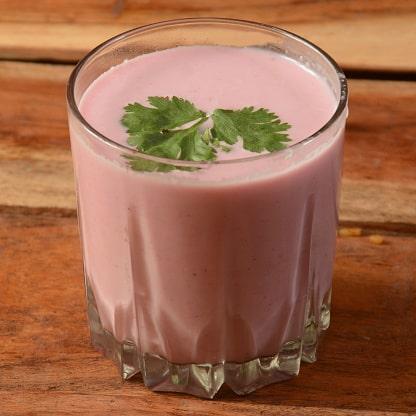
In the Konkan region the weather is always humid and thus it leads to acidity, indigestion and so we can see the food here is ultimately remedy for these issues. Solkadhi is the best example of it. It is made of coconut milk with added green chili, salt, ginger, cinnamon and the main ingredient, Amsul and then garnished with Coriander leaves. It is light pink in color and creamy-sweet and slightly sour in taste.
Items like papad, sandage, talan, ambawadi, amsul, and chinch-goli are popular snacks among the people of the Sindhudurg district. They prepare these snacks at home during the summer and enjoy them throughout the year.
Prasad and Bhandara
Usually, varan-bhat is served as prasad, and in a few places, Boondi Ladoo is also offered. Prasad is typically given on a banana leaf. In Dargahs, korma (crushed coconut) is offered. In churches, cakes or pastries are generally provided as blessings.
In the Sindhudurg district, there are several annual celebrations that invite people from the surrounding areas, particularly those living near the mandirs, to partake in a communal meal known as Gavjevan or Mahaprasad. One of the most significant occasions for this is the Utsav of Sateri Devi.
Smoking, Drinking and Substance Use
In the Konkan region, fruit farming is abundant, and rice is also a major crop grown here. As a result, homemade alcohol produced through fermentation is commonly consumed during festival seasons. Bondu, a fruit associated with the cashew tree (Kaju), is used to make alcohol. The Thakar Adivasis traditionally produce alcohol using large mud pots and by boiling the fermented juice of the fruit with a traditional burning system known as Chul.
In the Sindhudurg district, smoking has not traditionally been a part of the culture, although a few individuals have become addicted to Chilim (a type of tobacco). Over time, smoking practices have remained relatively unchanged, with no new smoking culture developing. The people here are generally more religious, and many consider smoking an insult to the Bhagwan, which discourages its prevalence. While smoking is not common, some women have historically used tobacco powder as a form of toothpaste. However, this practice is also declining across generations.
Local Culinary Traditions
The primary food grain for the people in this region is rice, which is the base for many local dishes. Additionally, fruit-based dishes are quite popular, such as Solkadhi, made from the kokam fruit, and Pej, a rice porridge. The local food culture heavily features seafood. Historically, people primarily consumed traditional dishes, but with the rise of social media and migration, they now have access to a variety of cuisines. Nonetheless, the authentic Konkani taste remains in high demand and retains its popularity.
Vada Kombda
Vada Kombda is a traditional and much-loved dish in Sindhudurg, often enjoyed during family gatherings and festive occasions. Vada is prepared using a dough made from equal parts of rice flour and a combination of wheat flour, urad dal flour, and jowar flour. These thick puris are deep-fried until they achieve a golden yellow-brown color. Kombda refers to chicken dishes; specifically, the chicken used is gavran chicken, which is traditionally cooked on a chul (a type of clay stove). The main ingredient that enhances the flavor is Malvani Kombda Masala.
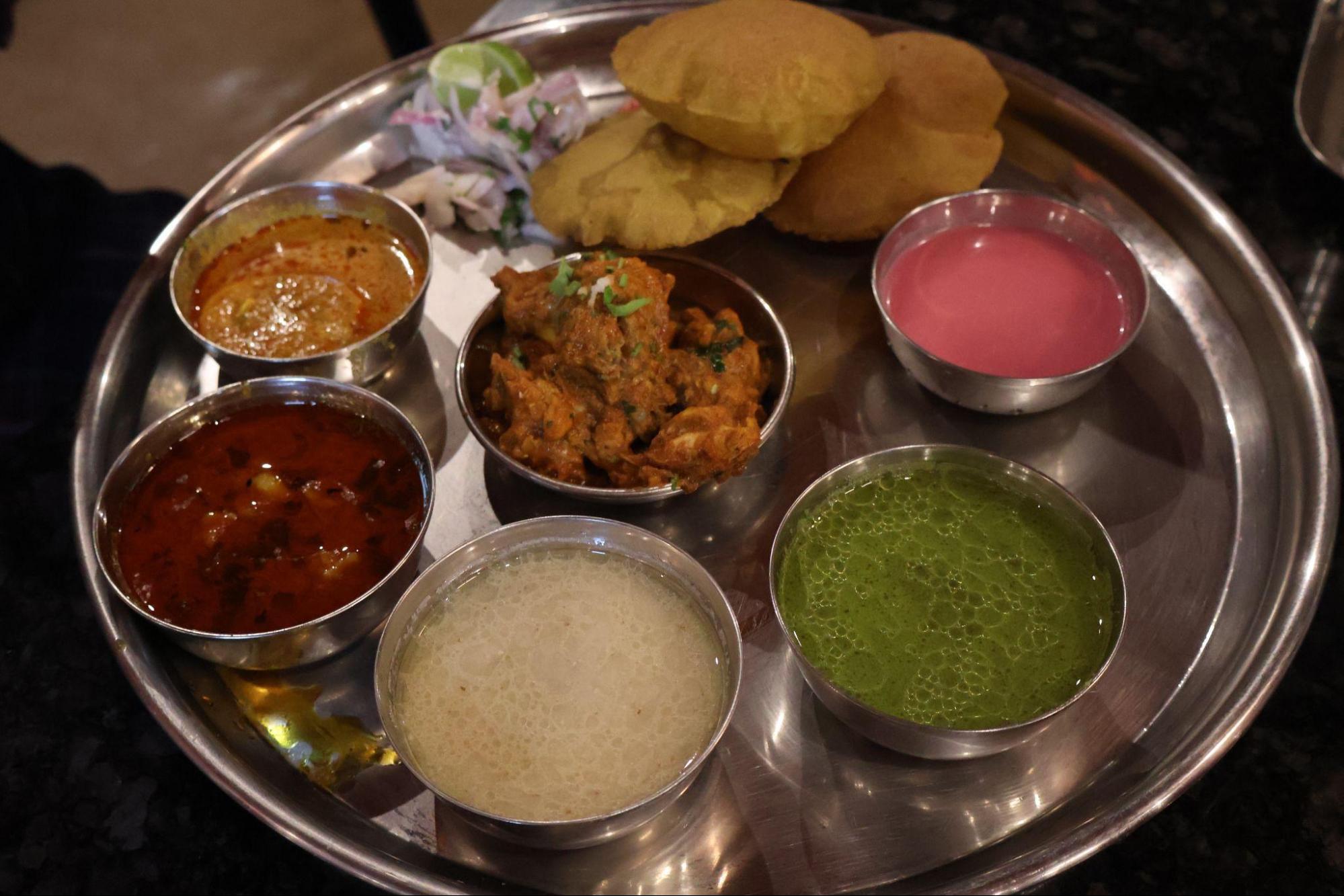
Nevarya
A popular festive sweet in the region, Nevarya is commonly prepared during special occasions and festivals. This dish is also known as karanji, but in this region, it is made with rice flour and steamed. It is typically stuffed with a filling called saran, which is prepared by cooking grated coconut with jaggery. To enhance the flavor, green cardamom is added, giving it a subtle sweetness and aroma.
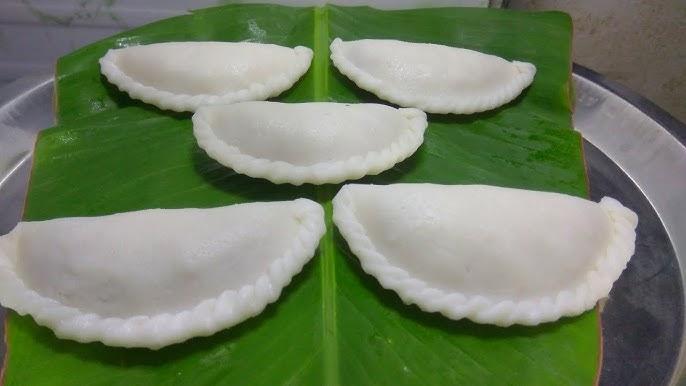
Amboli
Amboli has its origins in the Maharashtra state of India, and is particularly associated with the Konkan region. It is a notable dish in the Sindhudurg district. It is a traditional preparation made primarily from rice and pulses, often enjoyed as a breakfast or snack item. The name "Amboli" is also linked to a village in Sindhudurg, which is known for its lush greenery and rice cultivation. The dish is particularly popular in the Konkan area of Maharashtra, where it is often referred to as Ghavane. It is known for being vegan and gluten-free, making it a versatile option for many diets. The preparation involves soaking rice and dal, grinding them into a batter, and allowing it to ferment overnight before cooking on a hot griddle.

Shirwale ani Naralacha Ras
Shirwale ani Naralacha Ras is a traditional sweet dish commonly served with meals in the Malvan and Dodamarg talukas of Sindhudurg. Shirwale are soft, string-like noodles made using flours like gavthi tandul (local rice), bajari tandul (broken rice), or nachni (finger millet). They are typically enjoyed with Naralacha Ras, a sweet coconut milk preparation flavoured with jaggery and green cardamom.
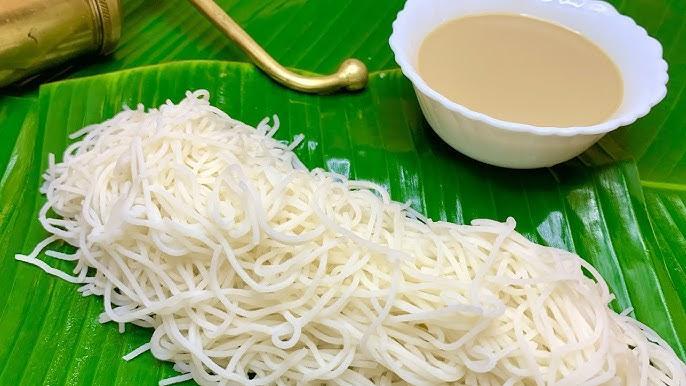
Eating Out
Sindhudurg is the first tourist district in India, officially declared in 1997. Tourists visit this region to experience the authentic and rooted lifestyle, encompassing everything from food to culture. The local community warmly invites and hosts tourists as their guests; thus, a hotel culture did not develop in the traditional sense. Instead, homestays and home-cooked meals are offered to visitors. However, with the growth of tourism, hoteling and lodging are increasingly seen as business opportunities, while local people remain connected to their roots. Notable places to eat in Sindhudurg include Shri Mahalaxmi Bhojnalaya-Sawantwadi, Bhalekar’s Mahalaxmi Khanawal (Non-Vegetarian)-Sawantwadi, Sadhale Mess (Vegetarian)-Sawantwadi, Krushna (Vegetarian)-Vengurle, Chaitanya (Non-Vegetarian)-Malvan, and Hotel Vasant Vijay-Devgad.
Local Worker Cooperatives / Self-Help Groups
Usha Vahini Khir is a delicious sweet dish that enjoys high demand in the surrounding regions. This product is made by a woman-owned organization based in Janwali, Kankavli taluka, in the Sindhudurg district. Known for its rich taste, Usha Vahini Khir has become a favorite among locals and visitors alike.
Last updated on 22 July 2025. Help us improve the information on this page by clicking on suggest edits or writing to us.